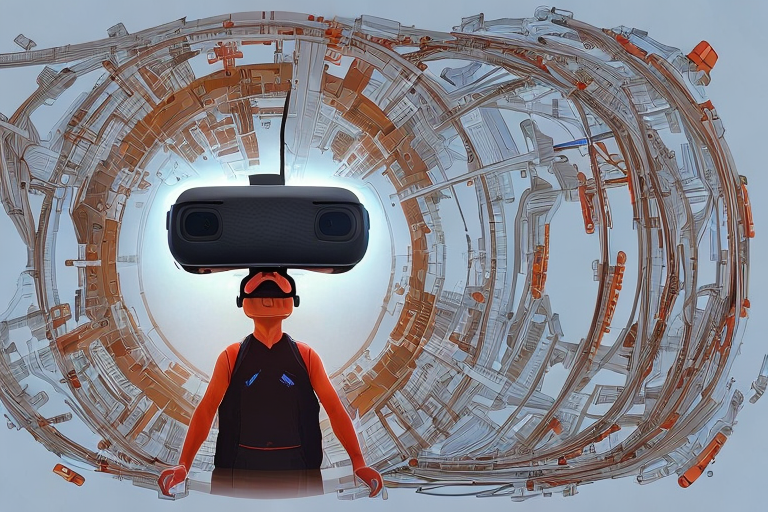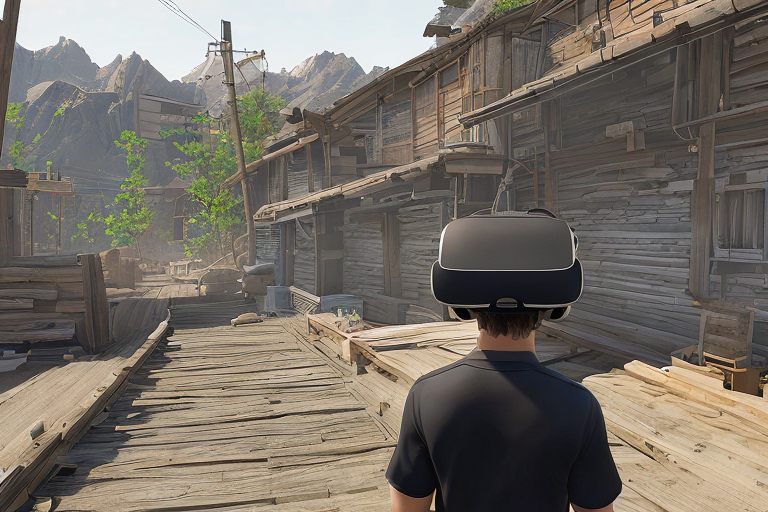인적 자원산업에서 가상 현실(VR)의 역할: 모집 및 훈련 향상(The Role of Virtual Reality in the…
본문

인력 산업은 가상 현실(VR) 기술의 부상과 함께 큰 변화를 겪고 있습니다. 최근 몇 년 동안 VR은 채용 및 교육 프로세스를 개선하기 위해 HR에 점점 더 많이 사용되어 더 효과적이고 효율적인 결과로 이어지고 있습니다.
VR이 인사에 활용되는 방법 중 하나는 가상 채용을 통한 것입니다. VR을 사용함으로써, 기업들은 구직자들에게 더 몰입적이고 상호작용적인 경험을 제공하여 그들이 회사 문화와 업무 환경을 더 잘 이해할 수 있도록 합니다. 게다가, VR은 또한 더 매력적이고 효과적인 방법으로 후보자의 기술과 능력을 평가하는 데 사용될 수 있습니다.
한국에서 채용 과정에서 VR 기술을 구현한 기업 중 하나가 삼성입니다. 그 회사는 후보자들에게 회사의 역사와 가치에 대한 더 나은 이해를 제공하면서, 그들에게 그들의 본사에 대한 가상의 투어를 제공하기 위해 VR을 사용합니다. 삼성은 또한 가상 환경에서 지원자의 팀워크와 문제 해결 능력을 평가하기 위해 VR을 사용하여 더 나은 채용 결정을 내릴 수 있도록 지원합니다.

VR이 HR에 사용되는 또 다른 방법은 가상 훈련을 통해서입니다. VR을 사용함으로써, 기업은 직원들에게 더 매력적이고 상호 작용적인 학습 경험을 제공하여 자료를 더 잘 보존하고 이해할 수 있습니다. VR은 또한 실제 시나리오를 시뮬레이션하는 데 사용될 수 있으므로 직원들이 안전하고 통제된 환경에서 기술을 연습하고 개발할 수 있습니다.
한국에서, 현대 자동차는 그들의 훈련 프로그램에 VR 기술을 구현했습니다. 이 회사는 VR을 사용하여 직원들에게 엔진 유지 보수 및 차량 안전과 같은 자동차 산업의 다양한 측면을 교육합니다. 현대자동차는 VR을 사용함으로써 직원들의 성과와 만족도가 크게 향상되었으며, 전통적인 교육 방법과 관련된 비용과 시간도 절감했다고 보고했습니다.
결론적으로, VR 기술은 인력 산업에서 점점 더 중요한 역할을 하고 있습니다. VR은 채용 및 교육 프로세스를 개선함으로써 기업이 더 나은 채용 결정을 내리고 직원의 성과와 만족도를 개선하는 데 도움이 됩니다. VR 기술이 지속적으로 발전함에 따라 향후 HR에서 훨씬 더 큰 역할을 수행하여 기업들이 곡선을 따라가고 비즈니스 목표를 달성하는 데 도움이 될 것으로 보입니다.

게다가, HR에서 가상 현실을 사용하는 것은 채용과 훈련 이상의 많은 이점을 가지고 있습니다. VR은 기업들이 무의식적인 편견을 없애고 모든 후보자들을 위한 더 평등한 경쟁의 장을 만들 수 있도록 함으로써 더 다양하고 포괄적인 일터를 만드는 데 사용될 수 있습니다.
예를 들어, 한국에서는 선도적인 기술 회사가 채용 과정에서 VR을 구현하여 더 다양한 작업 공간을 만들 수 있도록 지원했습니다. 이 회사는 배경, 민족, 성별에 관계없이 모든 지원자에게 평등하고 공정한 평가 프로세스를 제공하기 위해 VR을 사용합니다.
게다가, VR 기술은 인사 전문가들이 직원 참여 및 개발에 접근하는 방식을 혁신할 수 있는 잠재력을 가지고 있습니다. VR은 직원들에게 보다 몰입적이고 상호작용적인 학습 경험을 제공함으로써 직원들의 참여와 동기를 증가시켜 더 나은 보존과 생산성으로 이어질 수 있습니다.

요약하자면, HR 산업에서 가상 현실의 사용은 게임 체인저입니다. 채용, 교육, 다양성, 직원 참여 및 개발을 개선할 수 있는 잠재력이 있습니다. 기술이 계속 발전하고 성숙해짐에 따라, 우리는 앞으로 훨씬 더 혁신적이고 효과적인 VR의 HR 적용을 보게 될 것입니다.
결론적으로, HR에 VR을 사용하는 것은 트렌드일 뿐만 아니라 더 효율적이고 효과적인 HR 산업을 향한 필수적인 단계입니다. 인사 프로세스에 VR 기술을 도입하는 기업은 경쟁 우위를 확보하고 비즈니스와 직원에게 더 나은 결과를 제공할 수 있습니다.
The human resources industry is undergoing a major transformation with the rise of virtual reality (VR) technology. In recent years, VR has been increasingly used in HR to enhance recruitment and training processes, leading to more effective and efficient outcomes.
One of the ways that VR is being used in HR is through virtual recruitment. By using VR, companies can provide a more immersive and interactive experience for job candidates, allowing them to get a better understanding of the company culture and work environment. In addition, VR can also be used to assess a candidate's skills and abilities in a more engaging and effective manner.
In South Korea, one of the companies that have implemented VR technology in their recruitment process is Samsung. The company uses VR to give candidates a virtual tour of their headquarters, providing them with a better understanding of the company's history and values. Samsung also uses VR to assess a candidate's teamwork and problem-solving skills in a virtual environment, helping them to make better hiring decisions.
Another way that VR is being used in HR is through virtual training. By using VR, companies can provide employees with a more engaging and interactive learning experience, leading to better retention and understanding of the material. VR can also be used to simulate real-life scenarios, allowing employees to practice and develop their skills in a safe and controlled environment.
In Korea, Hyundai Motors has implemented VR technology in their training program. The company uses VR to train their employees on various aspects of the automotive industry, such as engine maintenance and vehicle safety. Hyundai Motors has reported that the use of VR has led to a significant improvement in employee performance and satisfaction, and has also reduced the cost and time associated with traditional training methods.
In conclusion, VR technology is playing an increasingly important role in the human resources industry. By enhancing recruitment and training processes, VR is helping companies to make better hiring decisions and to improve employee performance and satisfaction. As VR technology continues to evolve, it is likely that it will play an even larger role in HR in the future, helping companies to stay ahead of the curve and to achieve their business goals.
Moreover, the use of virtual reality in HR has numerous benefits beyond recruitment and training. VR can be used to create a more diverse and inclusive workplace, by allowing companies to eliminate unconscious biases and to create a more level playing field for all candidates.
For instance, in Korea, a leading tech company has implemented VR in their recruitment process to help create a more diverse workplace. The company uses VR to provide an equal and fair assessment process for all candidates, regardless of their background, ethnicity or gender.
Furthermore, VR technology has the potential to revolutionize the way HR professionals approach employee engagement and development. By providing employees with a more immersive and interactive learning experience, VR can help to increase employee engagement and motivation, leading to better retention and productivity.
In summary, the use of virtual reality in the HR industry is a game changer. It has the potential to enhance recruitment, training, diversity, and employee engagement and development. As the technology continues to evolve and mature, it is likely that we will see even more innovative and impactful applications of VR in HR in the coming years.
In conclusion, the use of VR in HR is not only a trend but a necessary step towards a more efficient and effective HR industry. Companies that embrace VR technology in their HR processes are likely to have a competitive advantage and to achieve better outcomes for their business and their employees.






















댓글목록 0